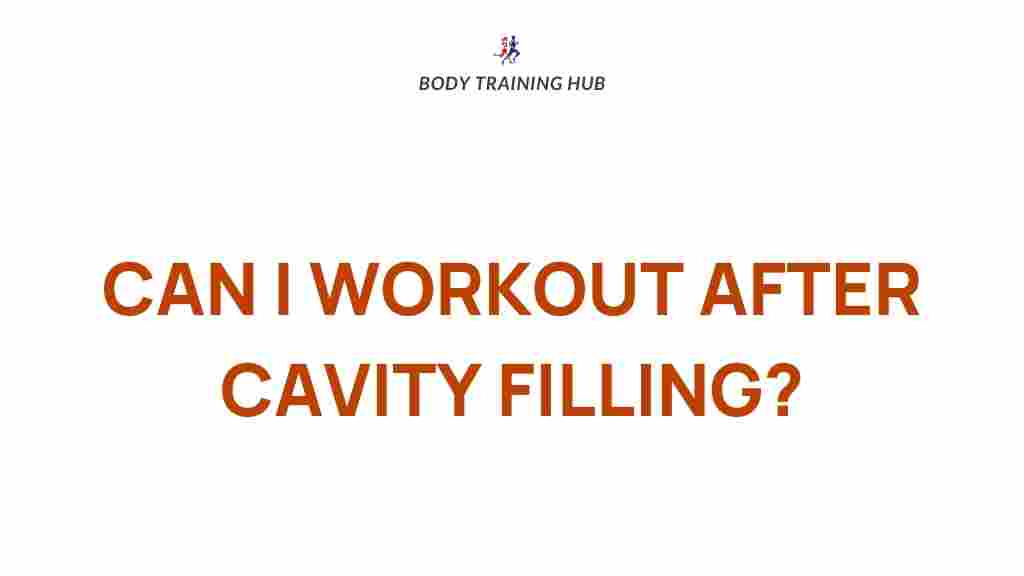Unveiling the Truth: Exercising After Dental Procedures
When it comes to dental procedures, many patients are often left wondering about the best ways to recover. One of the most common questions is: Can I get back to my workout routine immediately after a dental procedure? Understanding the relationship between exercise and dental care is essential for a smooth recovery. In this article, we will explore the myths and facts surrounding exercise after dental treatments, guiding you through the right steps to take for optimal recovery.
The Importance of Recovery After Dental Procedures
After undergoing dental procedures, whether it’s a tooth extraction, root canal, or dental implants, your body needs time to heal. Recovery is crucial to ensure that your dental work is successful and that you avoid complications. Engaging in physical activity too soon can lead to increased pain, swelling, and even bleeding.
Understanding the Myths and Facts About Exercise Post-Dental Work
There are several myths circulating about workout routines after dental procedures. Let’s break down some common misconceptions and the corresponding facts:
- Myth 1: You can resume your regular workout immediately after any dental procedure.
- Fact: The type of procedure dictates your recovery time. Simple cleanings may allow for immediate exercise, while major surgeries may require days of rest.
- Myth 2: Light exercise is always safe after dental work.
- Fact: Even light exercise can be problematic if you’re experiencing significant pain, swelling, or bleeding. Always consult your dentist first.
- Myth 3: Exercise helps dental recovery.
- Fact: While gentle movement can promote blood circulation, strenuous workouts can hinder recovery.
When Can You Resume Exercise After Dental Procedures?
Resuming your exercise routine after a dental procedure requires careful consideration. Here’s a general guideline to help you determine when it’s safe to get back to your workouts:
- 24 hours post-procedure: Rest is crucial. Avoid any strenuous activity and focus on hydration and soft foods.
- 48 to 72 hours post-procedure: If you feel comfortable, light activities like walking can be beneficial. Listen to your body and avoid any movements that cause discomfort.
- One week post-procedure: Most patients can gradually return to their regular workout routines, but be cautious with high-impact activities.
- Two weeks post-procedure: By this time, most dental surgeries have healed sufficiently, and you can resume your normal exercise routine.
Step-by-Step Process for Safe Exercise Post-Dental Work
Here’s a step-by-step approach to safely return to your workout routine after a dental procedure:
Step 1: Consult Your Dentist
Before resuming any physical activity, always consult with your dentist. They can provide specific advice based on the type of procedure you underwent.
Step 2: Start with Light Activities
Begin with light activities such as walking or gentle stretching. This helps to keep your body moving without putting too much strain on your healing gums or teeth.
Step 3: Monitor Your Symptoms
Pay attention to how your body responds. If you experience increased pain, swelling, or bleeding, stop the activity and consult your dentist.
Step 4: Gradually Increase Intensity
Once you feel comfortable, gradually increase the intensity of your workouts. This can include low-impact exercises like cycling or swimming.
Step 5: Return to Normal Routine
After about two weeks, if you are healed, you can generally return to your normal exercise routine. Ensure you’re feeling good physically before jumping back into high-intensity workouts.
Troubleshooting Tips for Post-Dental Exercise
It’s essential to be mindful of how your body responds when resuming exercise after dental work. Here are some troubleshooting tips:
- Stay Hydrated: Dehydration can lead to complications. Drink plenty of water, especially if you’re exercising.
- Choose the Right Time: Avoid exercising right after eating or taking pain medication, as this can increase discomfort.
- Use Ice Packs: If you experience swelling, applying ice packs can help reduce inflammation before and after workouts.
- Avoid High-Impact Activities: Activities that involve jumping or heavy lifting should be avoided for the initial recovery period.
- Listen to Your Body: If something doesn’t feel right, it’s better to err on the side of caution. Stop and rest.
Conclusion
Understanding how to balance exercise and recovery after dental procedures is key to a successful healing process. By dispelling myths and following the facts, you can make informed decisions about your workout routines. Always prioritize your health and consult with your dentist before making any changes to your exercise regimen. With the right approach, you can enjoy a smooth recovery and return to your fitness goals in no time.
For more information on maintaining good dental care practices post-procedure, check out this resource.
Remember, your health is paramount—take the time to recover properly, and you’ll be back to your fitness routine before you know it!
This article is in the category Myths & Facts and created by BodyTraining Team
